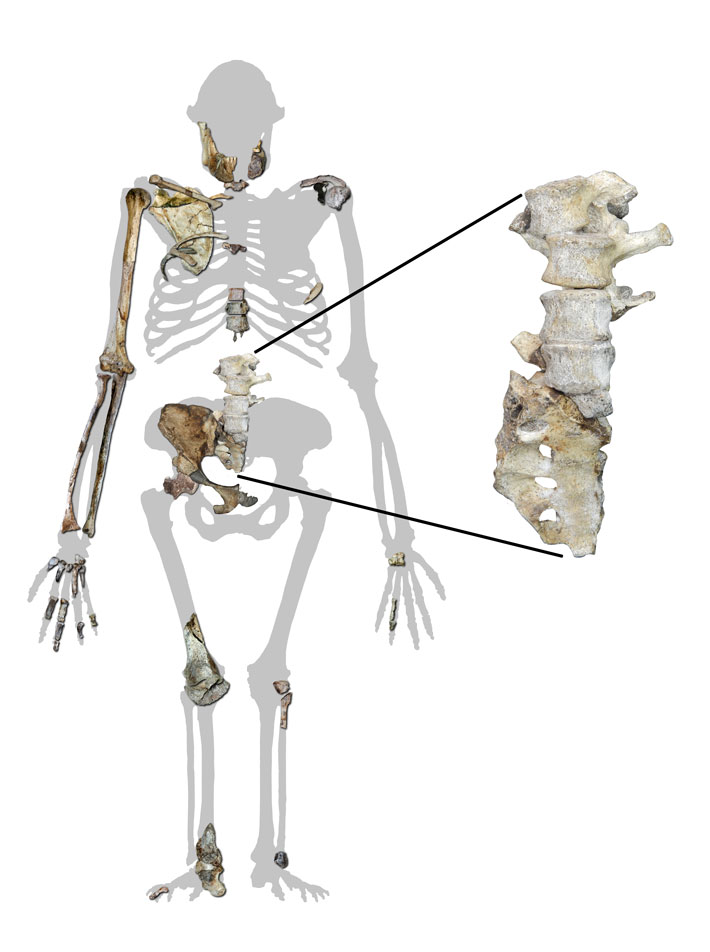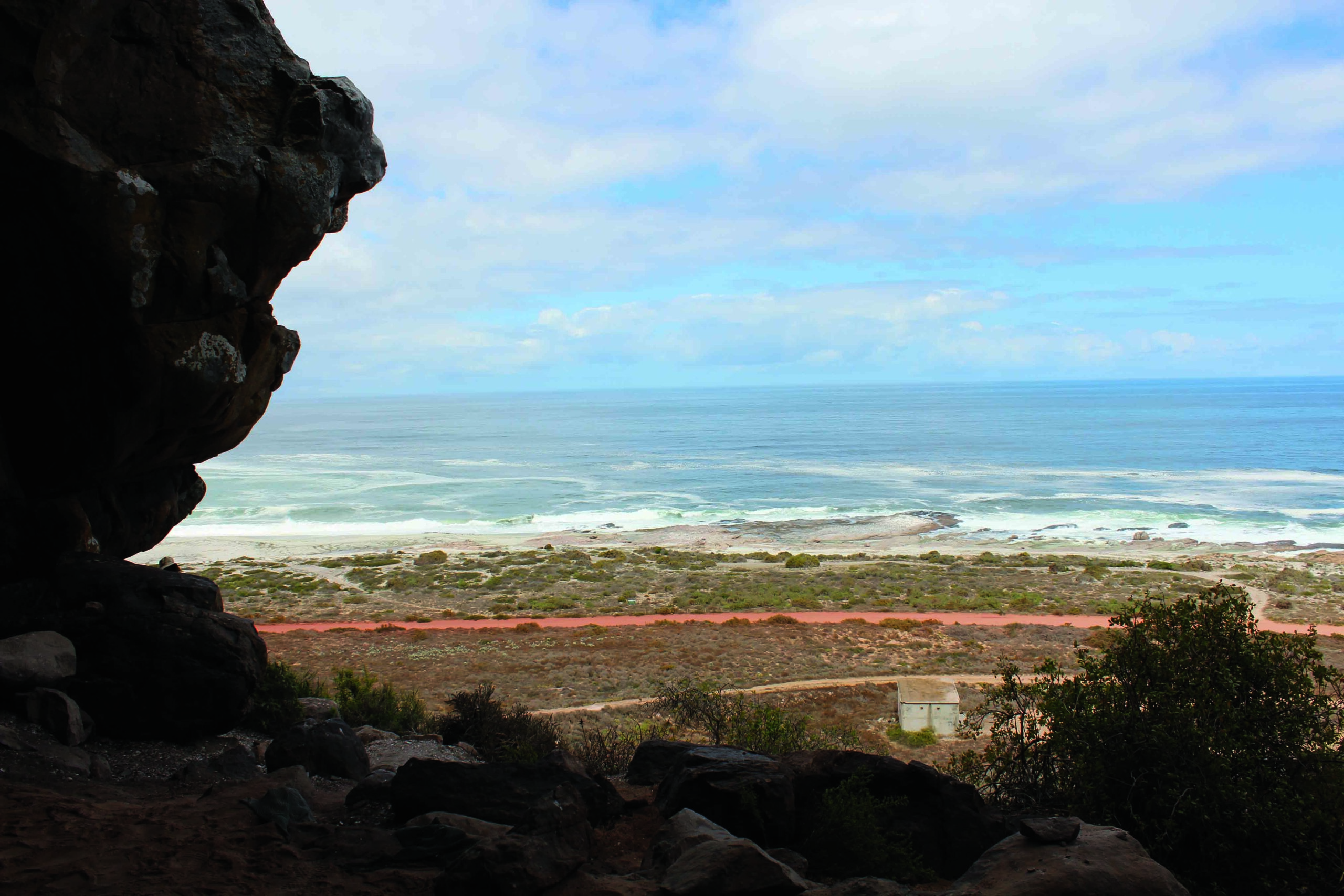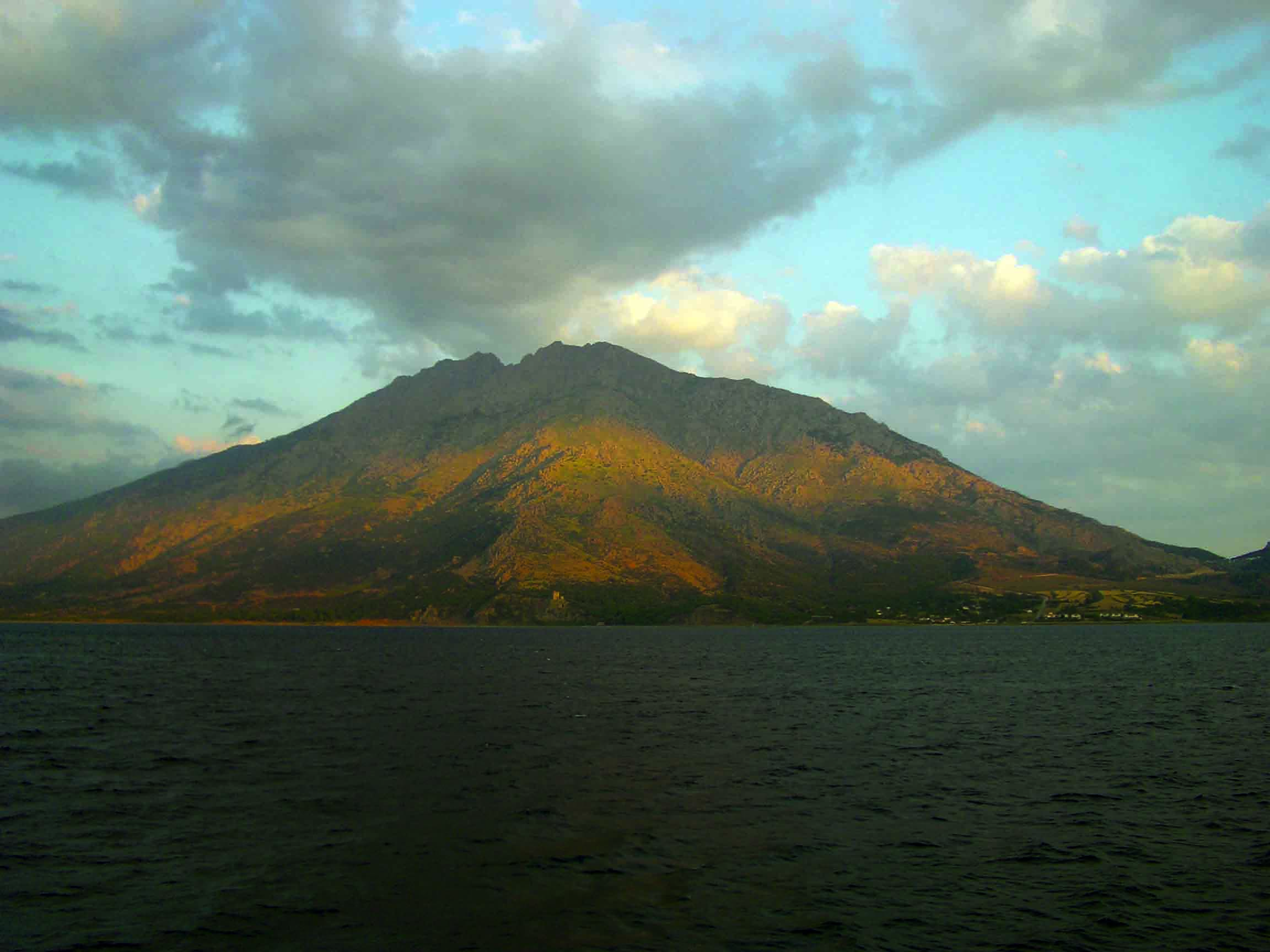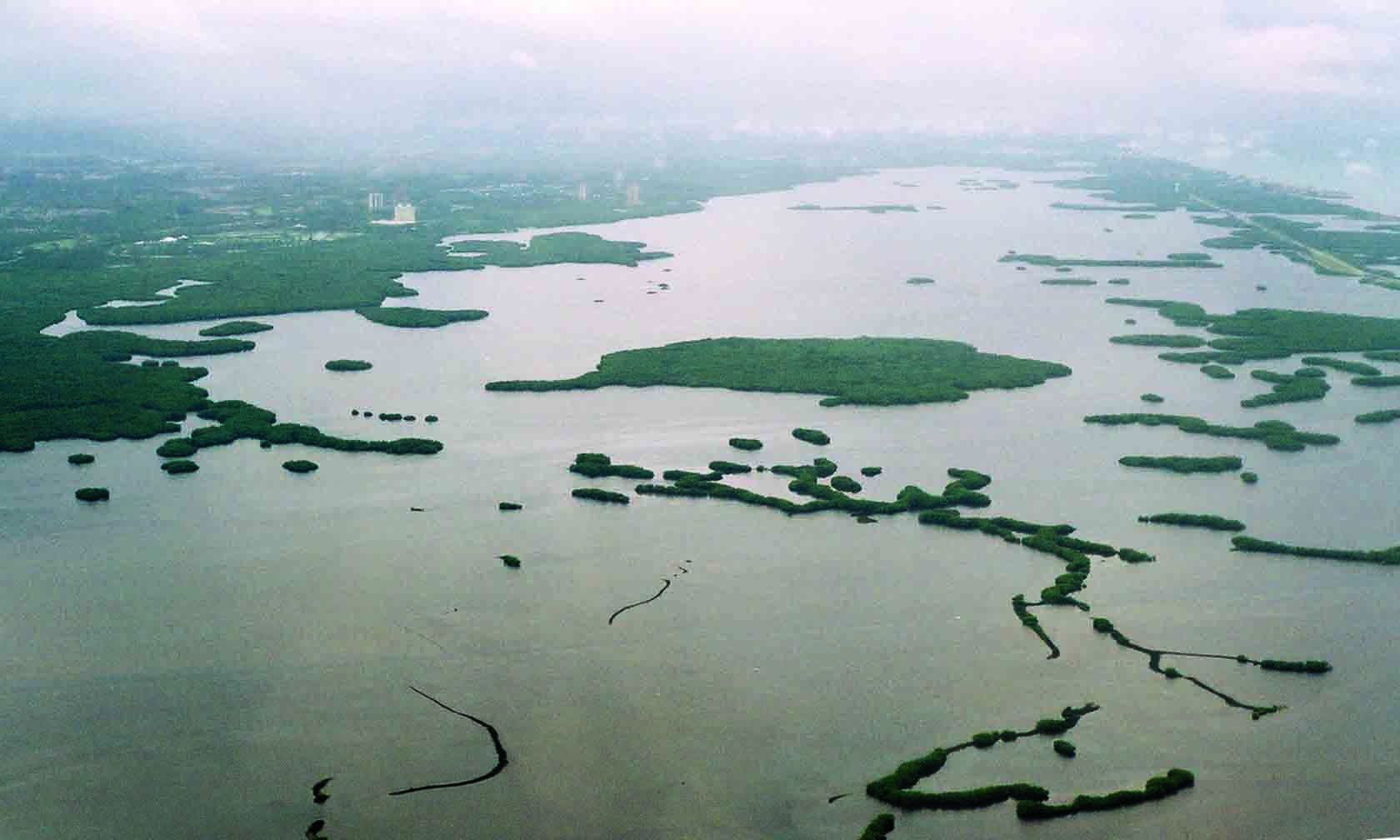
NEW YORK, NEW YORK—According to a statement released by New York University, recently discovered vertebrae fossils from the lower back of a female Australopithecus sediba individual known as Issa indicate that the early hominins were able to walk upright on two legs. The delicate two-million-year-old fossils, found encased in a chunk of breccia at South Africa’s site of Malapa, were viewed through a micro-CT scanner at the University of the Witwatersrand. The bones were then virtually reunited with fossils recovered during earlier work at the site to reconstruct one of the most complete lower backs of an early hominin. Scott Williams of New York University and the University of the Witwatersrand explained that Issa is now one of only two early hominin individuals identified through dentition and a nearly complete lower spine. Both are key to identifying hominin species, he explained. The study also suggests that Issa had a powerful trunk that may have allowed her to climb trees like an ape, added Gabrielle Russo of Stony Brook University. Read the original scholarly article about this research in e-Life. For more on A. sediba, go to "The Human Mosaic."










